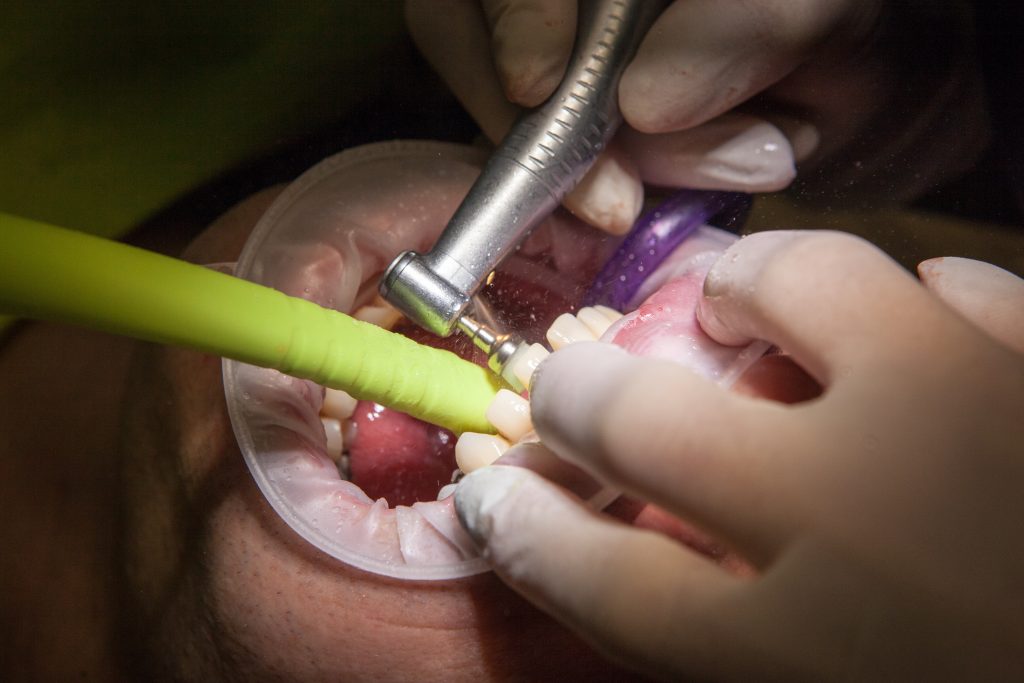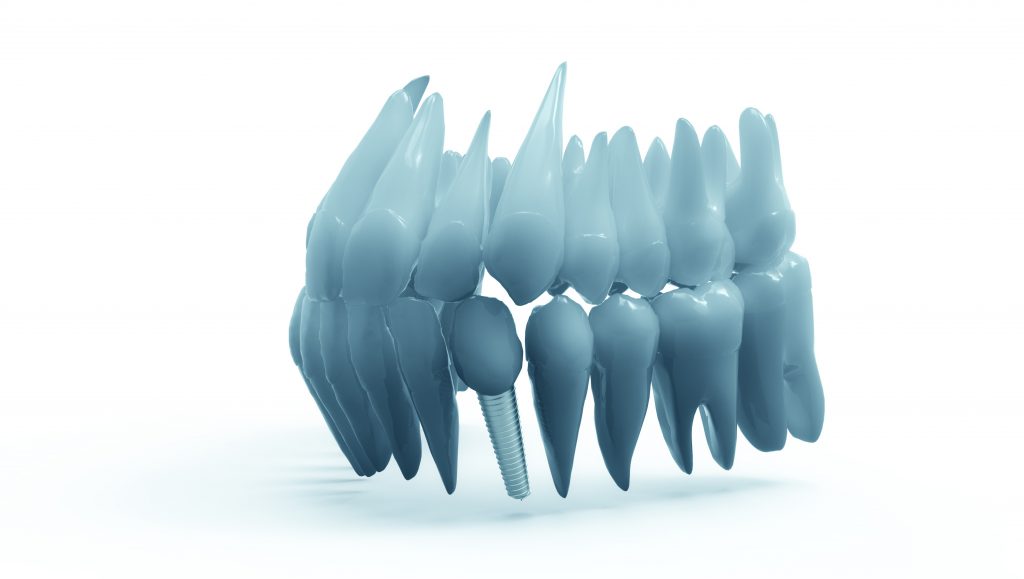
According to many studies, including one published in the Journal of Dental Research, people with straight and healthy teeth are more confident, have higher self-esteem, and are generally more successful. Even if you aren’t among the lucky ones born with perfectly aligned teeth, you shouldn’t despair. Cosmetic dentistry can help restore your confidence.
There are several reasons for which people seek out orthodontic treatment. Whether it is for crooked, yellow, misshapen or altogether missing teeth, cosmetic dentistry is a dental procedure that can give you the highly envied ‘Hollywood smile.’ Aesthetic dentistry involves changing the color, position, shape, and size of the teeth, as well as the jaw alignment and gum line.
Four Most Common Types of Cosmetic Dentistry Procedures
1. Teeth whitening

Wanting dazzling white teeth is hardly peculiar. We all want our smiles to be a little bit brighter. Regrettably, teeth discoloration can occur due to everyday foods and drinks like tea, coffee, wine, and berries. And those are just a few of the many culprits! Considering our teeth are regularly exposed to those products, it is not surprising that whitening procedures are the most popular cosmetic dentistry procedure requested.
While you can choose to buy a home whitening kit at an affordable price and bleach your teeth yourself, bear in mind that those different types of treatment deliver varying results. Still on the fence about spending hundreds of dollars for professional whitening treatment at a dental clinic? Here’s something that might tip scales: some bleaches used in these DIY kits can cause irreparable damage to the teeth enamel.
The safest way to whiten teeth is through an approved dentist. Dental professionals are trained to carry out various whitening procedures such as laser teeth whitening, zoom teeth whitening, and professional bleaching. Hence, they will also be able to tell if whitening is not recommended.
2. Braces

Whether you suffer from misaligned teeth or you have gaps in-between your teeth, it’s only natural to want to correct it. As mentioned above, straighter teeth aid in oral hygiene, improve one’s general appearance and boost self-confidence.
A gap between two upper front teeth is quite common and is referred to as a diastema. Gaps can occur between any two teeth and are generally caused by a mismatch between the size of the jaw bones and the size of the teeth. This occurs when the teeth are too small for the jawbones. On the other hand, with smaller jawbones, teeth are crowded and hence grow crooked or out of line. Either way, whether your teeth are overcrowded or have gaps between them, the problem can be easily fixed with orthodontic care.
Orthodontists undergo additional training for at least three years to study orthodontics and learn everything about correcting bites and straightening teeth. The treatment for the straightening of teeth involves using braces and can take anywhere from six months to two years or more. It is, therefore, no wonder that braces carry a hefty price tag. But opting out of it is ill-advised. Spaces between your teeth leave your gums unprotected and you are left at risk of losing teeth due to trauma.
3. Veneers

Among the many aesthetic dentistry choices available for improving the appearance of teeth, veneers are one of the most versatile options. Dental veneers are manufactured from medical-grade translucent porcelain or composite resin and are made to resemble each patient’s natural teeth. They are thin covers that not only allow for the shape, size, and color of your teeth to be changed but also cover surface flaws, close gaps between teeth and mask cracked or damaged enamel. Because of how realistic they look, veneers can resolve numerous cosmetic problems.
Whether you choose to get veneer for a single tooth or your entire set of front teeth, the procedure is one of the quickest and cheapest ways to get a full smile makeover. However, because of the enamel removal procedure, getting veneers is an irreversible process. Essentially, the dentist removes a small amount of enamel from each problem tooth and applies the veneer directly over the existing tooth by using a dental adhesive. If the original veneers fail, which usually happens after 10-20 years, you’ll need to replace them or get your teeth capped.
4. Teeth implants

If you have a wide gap between your two front teeth or have one or more teeth missing, you’d probably want to fill in space. In that case, getting an implant may be your best option. Teeth implants don’t have to be permanent and fixed. Nowadays, there are also removable replacement teeth that exist on the market. Designed to look like natural teeth, they can be made to match your natural teeth. Although dental implants are durable and do not feel like artificial teeth, they are more fragile than regular teeth and can be easily dislodged by undue pressure or trauma.
While the term ‘implant’ is most commonly used to refer to the entire replacement tooth, the implant is only the part that is inserted into the jawbone. A tooth crown is then surgically inserted and attached to the implant with an abutment. Sometimes, the tooth is even attached to surrounding teeth. This dental procedure can only be performed by licensed dental professionals who have been trained in the procedure.



bookmarked!!, I love your web site!